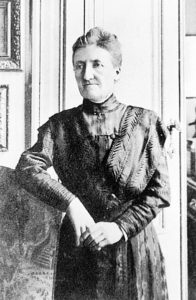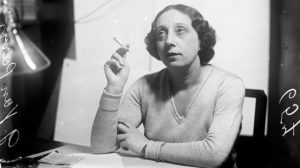International Women’s Day: Incredible women from Belgium
With today being International Women’s Day the world introspectively looks at the accomplishments that women have achieved through adversity and their ongoing struggle for a fairer society. Although this is a celebration for all women, past and present, famous or not, here is a list of people who created milestones in the efforts for equality, and pushed for change which made their mark on Belgium society.
Isabelle Gatti de Gamont (1839–1905)
Isabelle Gatti de Gamont started the first high school for girls in Brussels in 1864. Schools and education was not such a priority at the time, especially for girls and those run independently from the Roman Catholic Church.
Wanting to teach girls to be liberally minded thinkers rather than have traditional Catholic conservative schooling, Gamont opened the school and had great success amongst liberal citizens because of it. Encouraged by the popularity of the school, Gamont went on to found 18 different schools in her lifetime, hiring liberal thinking teachers such as Marie Popelin, to nurture young women with a good education.
Her efforts in education helped her create a pre-university course, aiding young women enter higher education and increasing female presence in university halls. She also campaigned for universal suffrage, wanting working class people to get a say In politics, and in 1889, she joined the Belgian Labour Party, but left when they only pushed for the voting rights of men.
Marie Popelin (1846–1913)
Following the efforts of Gamont, women were allowed to enrol at university from 1880. Marie Popelin was one of the women who undertook the challenge of education, and In 1888, she was the first women to study law in Belgium, later becoming the first with a law degree nationwide.
Despite her efforts, her application to practice law was denied by the bar association due to her being a woman. But in the spirit of defiance in the face of such injustice, and having the know how to do so, Popelin took it to the Belgian Court of Cassation, challenging the verdict and drawing media attention to the case.
Popelin lost the case but continued to advocate for women’s rights through the founding of her various organizations. With her efforts, women were finally allowed to become lawyers in 1922, nine years after Popelin’s death.
Germaine Van Parijs (1893–1983)
Germaine Van Parijs began at the Belgian newspaper Le Soir as the first female press photographer. Here she would photograph many things, including daily life in Brussels, Albert Einstein, the royal family, the floods in Namur, plane crashes, refugees of war, and mass demonstrations; earning her recognition as Belgium’s best photographer after WW2.
And her talent was matched with her defiance, as she refused to cooperate with newspapers under Nazi control during the Belgium occupation. But, that’s not to say she stayed inactive during the war years, in fact, she was one of the few female photojournalists to cover WWII and even photographed Belgium’s liberation. She started her own agency after the war.
Marguerite de Riemaecker-Legot (1913–1977)

Marguerite Legot rose to become the country’s first female minister. She started her journey studying law in Ghent University before moving onto a legal career; which she left to teach law beofre entering politics.
It was after the First World War that Legot entered politics. First working for minister Henri Pauwels who was charged with care for war wounded, she also became a member of the female branch of the Catholic Trade Union. Before women could even vote for national elections, Legot was elected as a Brussels’ representative in 1946. She then served as a secretary of the chamber, then as a delegate to the United Nations and even in the European Parliament for three years.
Upon the creation of the role of Minister for Family and Housing, Legot was elected, becoming the first female, Belgian minister. She went on to become the Minister of State just three years before her death and was awarded the order of Leopold II.
Isala Van Diest (1842-1916)
Isala Van Diest was the first female doctor and first female university graduate in Belgium. She decied early on that she wanted to study medicine. However, as girls were not privy to higher education of any kind, Van Diest had to travel to Switzerland to gain an education. There she enrolled at a university and then started work in England, in order to be a doctor, as women were not allowed to practice the profession in Belgium.
However, changes had begun in Belgium which lead to the Free University of Brussels granting women in the classrooms, with other universities gradually following. Taking additional new exams at this university and later gaining a Royal Decree, Van Diest finally became a doctor in her homeland.







